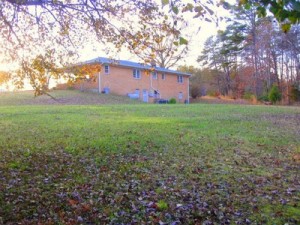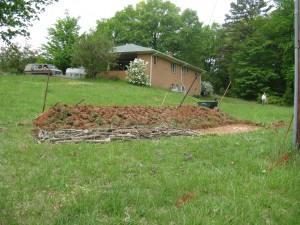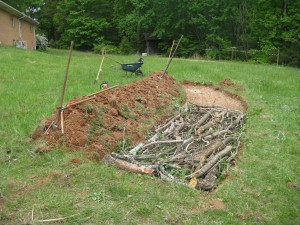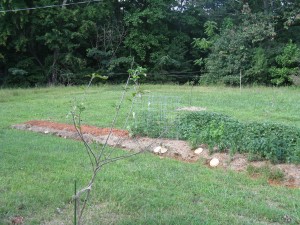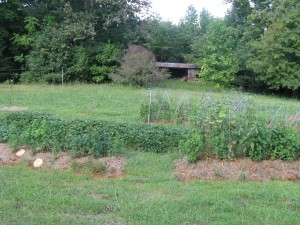What kind of wood should I use for my hugelkulture or wood-core bed? Whichever you have access to. With a few exceptions of course.
This question seems to come up all the time after someone discovers the benefits of rotting wood in a hugelkulture bed and permaculture garden. Is pine okay? Oak? Softwood vs. Hardwood, alleopathic woods, fresh or dead? The list goes on, and I’ll try and answer some of the most common ones today.

Maple filled hugel bed by of Paul Wheaton at permies.com
First, a general rule.
Use whatever wood you have easy access to.
Now, an exception to that rule.
Don’t use alleopathic or rot resistant woods like cedar, black walnut, and black locust.
Okay, that makes it easy. Pine is okay for hugel beds, so is oak, maple, sweetgum, apple and most any other species of tree around.
That includes softwood species as well. These trees, like pine, will typically rot faster than hardwood trees in a hugelkulture mound. This can be good or bad depending on your garden design, and your wants and needs. Sepp Holzer, the father of Hugelkulture, uses primarily softwoods on Krameterhof in the Alps because those are the trees most readily available.
For example, a hugelkulture bed that is used to support and establish a perennial system of trees, shrubs, and bushes, can be made of quicker rotting wood. This is because once the wood is completely decomposed into rich hummus, the deep roots of the plants are so well established that the benefits of the hugel mound are less needed and appreciated by the system at large.
But what about acidity? Isn’t pine acidic?
Yes and no. Pine trees, especially in the Eastern United States, are often found in old fields and clearings as a pioneer species. Their needles are full of ascorbic acid (vitamin c) and can acidify soils. This is useful in some circumstances, around acid lovers like blueberries and azaleas, but can be detrimental in other areas if allowed to swing the pH too far to the acid side.
So, you should avoid pine trees in your hugelkulture raised bed, right? No, while pine needles are acidifying, the wood is not, and neither are the brown needles. Pine is fine, just don’t fill your bed with bales of green needles.

Black walnut and hugelkulture do not mix
Photo courtesy of Jim Linwood
Okay, what about these alleopathic trees that should be avoided in the garden? These are plants that for one reason or another (usually to provide an ecological advantage) inhibit the growth of nearby plants with chemical warfare. The most famous of these is black walnut, which secretes juglone, a chemical only a select number of species can tolerate. Pecans also secrete juglone, though not as much as black walnut.
Some other plants to avoid are the cedars, and black locust which is highly rot resistant and composed of high levels of fungicidal components, not the best combo for a hugelkulture or woody bed. These woods are also generally higher value woods and have many other uses, such as firewood (black locust firewood may be the best firewood available), cooking and smoking, furniture making, wood carving, and fence posts.
So, what is best material for a hugelkulture bed? Whatever you have lying around–it will all rot–some just at a different pace than others. The most important thing is to not over analyze it and start digging, because regardless of the wood chosen, it takes time to start to decompose and harvest nitrogen before you can see the effects of the wood core in your garden or permaculture system.
What woods have you used in your hugel beds? Let us know in the comments if some worked better than others in certain applications.
